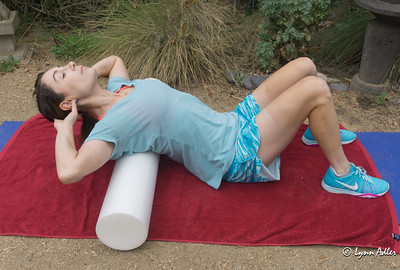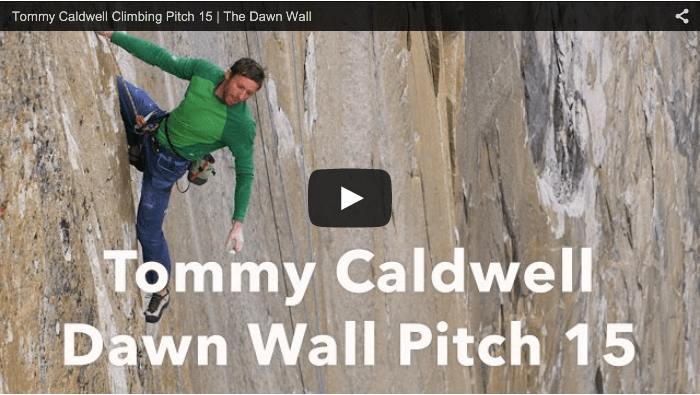- California Enduro Series Announces 2024 Schedule - 11/19/2023
- ASHLAND MOUNTAIN CHALLENGE 2023 – CES RACE REPORT - 10/04/2023
- China Peak Enduro 2023 – CES Race Report - 09/04/2023
Learn why you need foam rolling in your life
By Dara Richman
If you ride a bike, run, or participate in most sports, foam rolling should become part of your workout routine. Having worked as a physical therapist specializing in sports medicine, I have been using the foam roll in my clinic for many years now. The foam roll is your friend, your savior, the tool your quads will soon develop a love/ hate relationship with. While I am pleased to see more and more people rolling out in the gym, I am left to wonder if most people really know how to get the most from it, and how to dose it appropriately for their needs?
I decided to come up with my foam roll “cheat sheet” for my runners, cyclists, climbers, and all around weekend warriors to solve that problem.
WHAT: In a nutshell, by foam rolling over tight muscles, fascia, and connective tissue, a person is able to mobilize tissue; thereby improving flexibility.
The foam roll for many is a good substitute or addition to deep tissue/myofascial work with a massage therapist, physical therapist or other practitioner. Foam rolling has been dubbed as “self myofascial release.” In layman’s terms, as you move back and forth over the foam roll it acts a leverage to stretch, release trigger points, and loosen things up. Of note, foam rolling is not always comfortable. It is a more aggressive way to open up tight tissue. If you are someone who does not enjoy or benefit from deep tissue work, foam rolling also may not be the best way for you to work on soft tissue mobility.
WHY: The foam roll helps loosen up adhesions along fascia, connective tissue and muscle groups so they can move better, and more naturally. Newer theories also point to an improved neuromuscular response, allowing the brain to receive better feedback on tissue mobility and helping to improve that connection. This ultimately helps with normalizing movement, range of motion, and preventing injury.
WHICH: Choice of exercises depend on what you are trying to move and what areas you are trying to target. Since I work mostly with cyclists, runners, weekend warriors and the like, I have developed easy to follow guidelines that includes foam rolling sequences.
HOW: Life gets in the way, ideally dosing should be 3-4 times a week at minimum. I am realistic in my dosing of exercises, I would expect my clients to do as much as I am willing to do in my own busy life. My suggestion is to find a way to fit it into your daily routine, so that it becomes just that, routine. I prefer to roll out at the end of my day when I am unwinding and watching television. Some prefer before or post workout. The reality is that you are trying to effect lasting changes in flexibility and even eliciting a neural response to the stretching, so it may not be as relevant when you do it, as long as you are actually getting it done.
As always be mindful of any injuries and always be careful engaging in any new athletic endeavor.
1. I prefer to start by stretching out my pec and chest, using the foam roll parallel to my spine, knees bent and neck in neutral to keep my back comfortable. I will usually hold this position for 2-3 minutes, ultimately you can maintain this stretch as long as needed, every body is different. If your shoulders ache from resting on the floor, you can modify and bend your elbows resting hands along ribcage.

2. After this front body pec stretch I will usually turn the foam roll perpendicular to my spine and roll up and down approximate the areas between the top of the shoulder blades to the bottom of the ribcage. Essentially working through your mid back, or thoracic spine, can help to loosen up the restricted tissue and improve motion in the vertebrae. This area is often tight and stiff from sitting at our desks, driving, or hunched over our phones and computers all day.

3. Next up I will move onto the front part of my legs and thighs, rolling out my quad muscles for about 2-3 mins. Slowly is the key, working out knots along the way. Most sports engage these muscles to some extent. They develop restrictions which can also affect the position and pull on the kneecap potentially leading to knee pain later.

4. I saved the best for last. I will work along the outer aspects of my thighs, the Iliotibial band, or simply IT band. This is the “hurt so good” type of feeling. The IT band often feels tender as there is friction or adhesions as it runs across and over the thigh muscles. Work along this area can be pretty intense, your IT band is highly innervated, you will feel it after 2-3 minutes.

Happy foam rolling!
 Dara Richman is a Physical Therapist in the San Francisco Bay Area, where she consults with private clients on how to maximize their fitness potential, recover from injury quickly, and return to sport, plus strength and conditioning, and injury prevention. She has taught human anatomy and kinesiology, as well as fitness, kickboxing, and dance. Working with some of the top orthopedic surgeons in Southern California treating pro cyclists, AVP volleyball players, pro soccer players, NFL athletes and the like has given her an appreciation for all the varied sports injuries.
Dara Richman is a Physical Therapist in the San Francisco Bay Area, where she consults with private clients on how to maximize their fitness potential, recover from injury quickly, and return to sport, plus strength and conditioning, and injury prevention. She has taught human anatomy and kinesiology, as well as fitness, kickboxing, and dance. Working with some of the top orthopedic surgeons in Southern California treating pro cyclists, AVP volleyball players, pro soccer players, NFL athletes and the like has given her an appreciation for all the varied sports injuries.
Dara is a cyclist, yogi, and Crossfitter. Her motto is find something you like that keeps you moving, and move. She didn’t grow up being an athlete; somewhere along the way it just happened. Starting off as an aerobics instructor at UCLA, she found that exercising empowered her as a strong woman. Motivating others to exercise struck a chord personally and professionally. When not treating patients or coaching, she can be found riding her road bike or mountain bike all over the Bay Area.
Follow Dara’s sports musings further at sportsbebe.wordpress.com.












